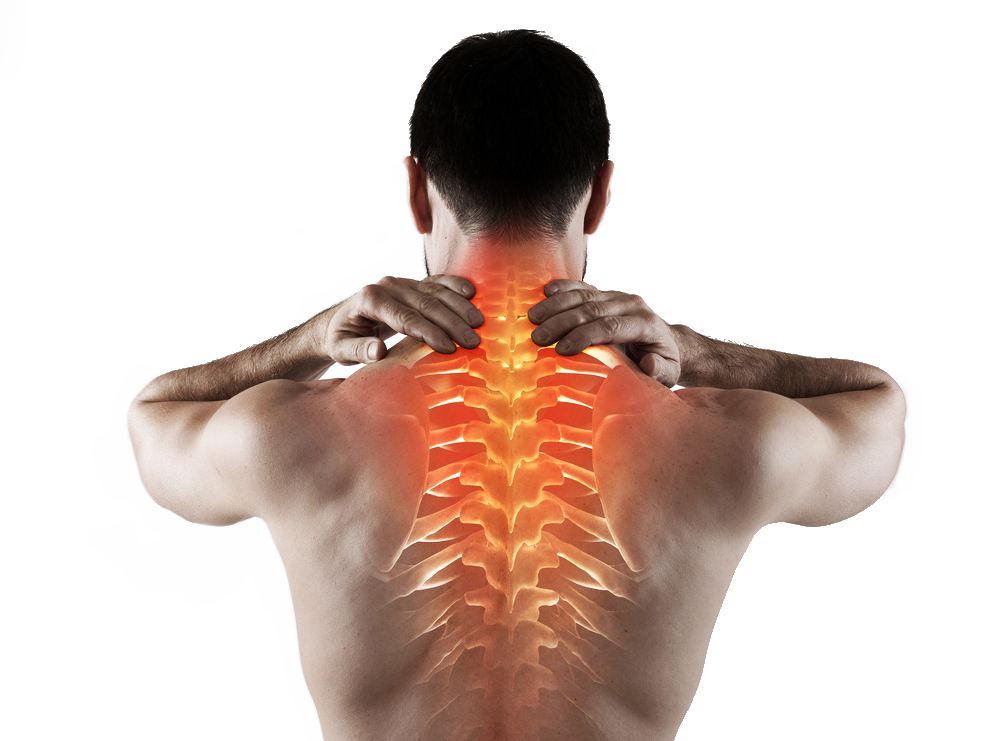Medically Reviewed By | Johannah Gregg, DNP FNP-C
Recovery from back pain can be strenuous for athletes and non-athletes. The two main causes of consistent back pain among athletes are repeated hyperextension and/or pain caused by contact or strain. Although consistent back pain is unusual in young (children) athletes; it should always be taken seriously if back pain persists.
The Anatomy of Back Pain
Understanding the basics of back anatomy is crucial for grasping why back pain may occur.
At the core of your back's structure is the spinal cord, a complex network of nerves and tissues that extends from the brain down the length of the spine. The spinal cord resides within the spinal canal, a tunnel-like structure formed by a stack of vertebrae. Each vertebra is categorized into one of three areas: cervical (neck), thoracic (mid-back), and lumbar (lower back).
Your back also comprises numerous ligaments and back muscles that work together to support the spine and facilitate movement. These components absorb shock, aid in mobility, and hold the spinal structure intact.
Overuse, strain, or injury to these ligaments and muscles can potentially lead to discomfort. Incrediwear back support products are designed to support these vital structures, encouraging overall back wellness.
What Are Some Common Causes of Back Pain?
There are a multitude of factors that can contribute to back pain. A common cause is poor posture, which can put undue strain on the back muscles and the lumbar spine over time. This may result in low back pain, a frequently reported issue among adults.
Certain health conditions can also contribute to back pain.
For instance, degenerative disc disease and spinal stenosis can affect the spinal cord's normal function, leading to discomfort. Osteoarthritis, a condition characterized by joint degeneration, and ankylosing spondylitis, an inflammatory disease that can cause some of the vertebrae in your spine to fuse, are also associated with back pain.
Additionally, a condition known as spondylolisthesis, where one bone in your back slides forward over the bone below it, can lead to lower back pain.
Even non-spine-related issues like kidney stones can manifest as back pain. Incorporating preventative and supportive practices can help maintain back health, but it’s important to seek the care of a healthcare provider if a health condition is causing your back pain versus overuse or an acute injury.
Repeated hyperextension occurs when the spine is continuously over-extended or “bending back.” Much like if you were to take a thin piece of aluminum and bend it back and forth. Each bend weakens the medal where it's bending. This is also referred to as “spinal overload syndrome,” which mostly stems from sports like gymnastics, lacrosse, diving, dancing, etc. Repeated hyperextension places a lot of stress on the structures of the back that allow for flexibility.
The second cause of consistent back pain either involves taking a heavy blow to the back or having the muscles strained too much. These causes are usually found in contact sports such as football or weight lifting (if someone tries to lift too much). Contact or strain can lead to spinal disc problems, which again are unusual in young athletes, but should always be looked for when a young athlete is complaining about consistent back pain after participating in these kinds of sports or activities.
You don’t need to be an athlete to have consistent back pain.
What Are the Different Types and Symptoms of Back Pain?
Back pain is not a singular experience; rather, it manifests in various forms.
One type is sciatica, which is characterized by pain radiating along the sciatic nerve, extending from the lower back to the legs. This type of pain can be particularly intense and is often caused by a herniated disc or spinal stenosis.
Chronic back pain, on the other hand, lasts for more than three months and may be associated with conditions such as osteoarthritis or degenerative disc disease. This type of pain can fluctuate in intensity and duration, sometimes being a dull ache and other times presenting as severe pain.
Musculoskeletal issues and nerve root compression can also lead to back pain. These can cause symptoms like weakness, numbness, or even severe cases of incontinence. Recognizing these types of pain and their symptoms can aid in seeking appropriate treatment. Moreover, using products that support the back can assist in managing these symptoms.
It’s useful to be able to accurately describe your back pain for helping to diagnose the underlying cause. Some examples are:
Axial Pain – can be described best as a dull or sharp pain that comes and goes. Muscle strains are the most common cause of this type of pain.
Radicular Pain – can be described as deep or searing pain. Radicular pain runs along the nerve to the arm or leg, which can be paired with weakness or numbness in the limb. The cause for this type of pain can stem from a herniated disc, compression or inflammation injury to a nerve root in the spine.
Referred Pain – can be described as achy or dull, varies in intensity, and generally manifests in different places along the spine.
How Is Back Pain Diagnosed?
Identifying the root cause of back pain can sometimes be challenging, but various diagnostic methods can assist in this process.
X-rays are a common first step, providing a clear view of the bones within the spinal column. These images can help healthcare providers identify issues such as osteoporosis, a condition that weakens bones and makes them prone to fractures. CT scans offer more detailed visuals, which can detect tumors or signs of scoliosis, a condition where the spine curves sideways.
Sometimes, health professionals might use more advanced tools for assessing spinal cord and nerve root health, such as MRI scans. These scans can reveal herniated discs or degeneration of discs, helping guide the appropriate treatment options.
It's crucial to remember that while these diagnostic tools are helpful, they should be paired with professional medical advice for a comprehensive understanding of one's back health.
How Do You Treat Back Pain?
There's a wide range of treatment options available for managing back pain.
One common approach is physical therapy. Working with a physical therapist can help build strength in the back muscles, improve flexibility, and promote good posture, which can relieve some types of back pain.
For temporary pain relief of acute (short-lasting) problems, over-the-counter options like ibuprofen are commonly recommended by healthcare providers. Muscle relaxants may also be prescribed for muscle spasms or anti-inflammatories like prednisone to reduce swelling. In some cases, an epidural injection might be recommended to reduce inflammation and relieve pain, particularly in cases of severe sciatica or herniated disc.
In some circumstances, healthcare professionals may suggest lifestyle modifications, like weight loss, which can lessen the strain on the back. It's essential to consult with a professional to determine the most effective treatment options for you.
Can You Prevent Back Pain?
Prevention is key to maintaining a healthy back and avoiding potential back problems.
Good posture is an important part of this. Ensuring your spine is aligned, particularly during long periods of sitting or standing, can help prevent strain and maintain the health of your lumbar spine.
Regular physical activity also plays a significant role in back health. Exercise strengthens the back muscles, increases flexibility, and can contribute to weight loss, reducing the burden on your back.
Another preventative measure is to avoid lifting heavy objects beyond your capacity, as this can lead to muscle strain or sprain. When lifting, always bend from the knees and not the waist, keeping the object close to your body.
Investing in supportive products can also aid in soothing back discomfort. The right back pain products provide gentle support to the back, encouraging proper posture and reducing the risk of strain.
As always, it's best to consult with a healthcare professional for personalized advice.
Wrapping Things Up
Your back is an important part of staying active. Watch out for it with plenty of rest if you feel it is strained, bruised, or hyperextended.
You can get back to being active and embrace life now with the right self-care and support! Good luck!
Sources:
Anatomy, Back - StatPearls | NCBI Bookshelf
Common Causes of Back Pain - Types & Treatment | NIAMS
Sciatica - Symptoms and causes | Mayo Clinic
7 Ways to Treat Chronic Back Pain Without Surgery | Johns Hopkins Medicine
Read more

Medically Reviewed By | Johannah Gregg, DNP FNP-C You’re probably not a runner if you haven’t experienced knee pain at some point. Running, as a high-impact exercise, does lend itself to the occasi...

Medically Reviewed By | Johannah Gregg, DNP FNP-C You’re probably not a runner if you haven’t experienced knee pain at some point. Running, as a high-impact exercise, does lend itself to the occasi...






Leave a comment
All comments are moderated before being published.
This site is protected by hCaptcha and the hCaptcha Privacy Policy and Terms of Service apply.